Prosiect Penrhyn is one of ISWE’s core initiatives. It brings together a vibrant regional network of cultural heritage, community, business and academic partners to generate enhanced engagement with the local and global history of the Penrhyn estate.
From the time of its emergence in the medieval period through to the early part of the twentieth century, the Penrhyn estate was dominant force in the life of north west Wales. This influence extended across a massive landholding base and embraced all aspects of society – ranging from industry, politics, culture and religion through to architecture, language, farming and land management. The story and legacy of Penrhyn is complex and multifaceted, both intensely local and international in scale – and infused with important strands of considerable controversy and contention, notably the centrality of the transatlantic slave trade to the estate’s history and its essential role in the global history of slate, including the Great Penrhyn Quarry Strike of 1900-03.
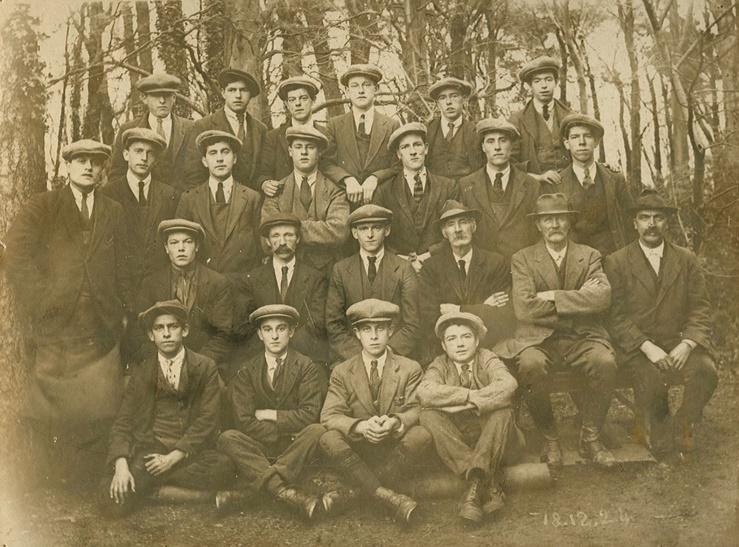
Penrhyn has been central to the history, landscapes and identity of north west Wales since the medieval period, yet remains conspicuously underexplored. Prosiect Penrhyn has been established by ISWE in recognition that Penrhyn offers an outstanding prism for exploring the history of the region, its communities and links to the wider world. The programme of research generated by Prosiect Penrhyn has the potential to be transformational: interrogating established narratives, questioning traditional perceptions and myths and providing rigorous interpretation which offers a step change for understandings of, and engagement with the local history, culture, landscapes and identity of Gwynedd.
The initiation of Prosiect Penrhyn was underpinned by the completion of a major cataloguing project at Bangor University Archives and Special Collections (BUASC), which facilitates access to the full corpus of records generated by the Penrhyn families and estate for the first time. The project also dovetails with two important allied initiatives which promise to make far reaching contributions towards the development and promotion of the region’s heritage, culture, tourism and economy, namely the Llechi Cymru | Wales Slate UNESCO World Heritage Bid and the National Trust’s strategy for transforming the way that the story of Penrhyn Castle is presented to the public through the interlinked areas of heritage interpretation, visitor experience and community engagement.
The Penrhyn Estate Archive
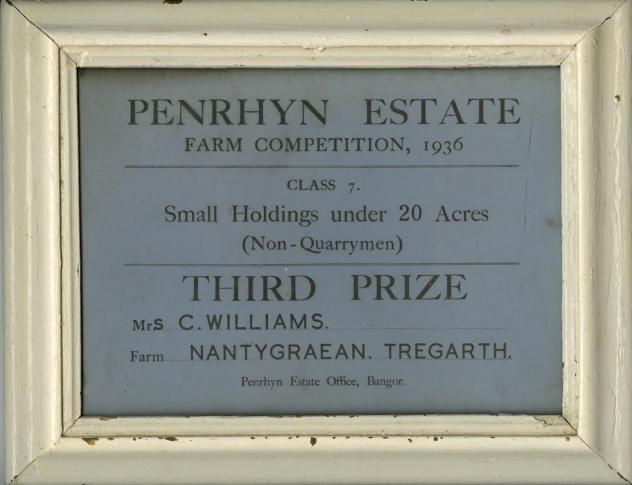
Penrhyn Castle is a major National Trust property located on the outskirts of Bangor. For centuries it was the powerbase of one of the largest and most influential landed families and estates in Wales.
The Penrhyn Estate Archive is a continuous series of records created by the estate and its successive owners: the Gruffydd, Williams, Pennant and Douglas-Pennant families, between the thirteenth and twentieth centuries. It was one of the largest estate archives obtained by Bangor University Archives and Special Collections during the mid-twentieth century, initially through a major deposit in March 1939, with significant accruals in February and September 1966 and in 1999.
At the end of the nineteenth century, the Penrhyn estate extended to about 72,000 acres, making it the third largest in Wales. From the time of its emergence in the medieval period, it constituted a dominant force in the life of north west Wales, extending across a massive landholding base and exerting profound impacts on all aspects of society, ranging from industry, politics, culture and religion, through to architecture, language, farming and landscape. The archive contains records relating to all of the above – in its scope and extent it is unrivalled amongst the estate archives at Bangor.
The majority of the records relate to the acquisition, consolidation, management and inheritance of the estate – title deeds, settlements, rentals, accounts, correspondence, maps and surveys. However, the history, character and legacy of Penrhyn is complex and multifaceted, including themes and episodes of considerable significance, controversy and contention. It is these features which provide the Penrhyn archive with its standout heritage and research value, as a collection of local, national and global significance, including:
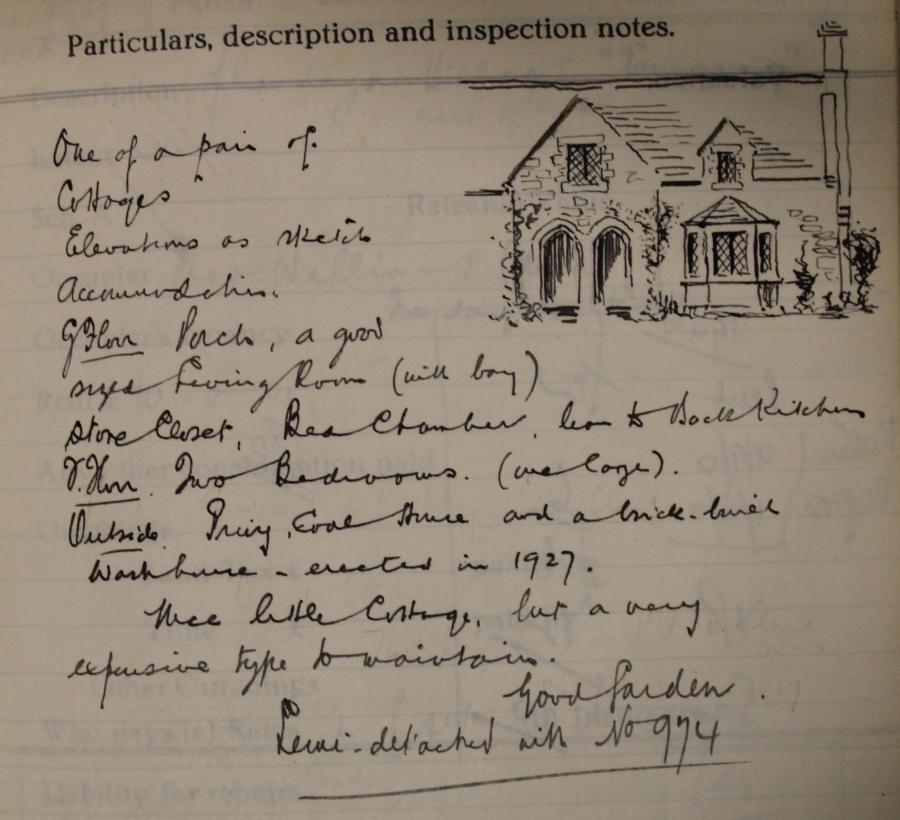
- Records which detail the early development of a landed estate in north Wales beyond the traditional confines of the native system of landholding and inheritance (known as cyfran), including numerous examples of conveyance in tir prid, grants of land linked to the family’s allegiance during the Glyndŵr rebellion and papers evidencing the emergence of the Gruffydd family, who by the fifteenth century were the most powerful gentry force in north Wales.
- Records relating to the estate’s connections to transatlantic slavery and the family’s landed and economic interest in Jamaica dating from c.1660 until c.1940, including papers detailing the development and management of their sugar plantations and involvements in the slave trade.
- Records relating to the Penrhyn Quarry in Bethesda, which developed into one of the largest in the world, employing 3,000 men at its height, exporting slate on a global scale and exerting a profound influence on the character of regional society; including records of significance to the history of labour, workers’ rights and trade unionism, notably the Great Strike of 1900–03 (still the longest running industrial dispute in British history).
- Records detailing one of the most ambitious programmes of estate ‘improvement’ in Britain, overseen by the multitalented Benjamin and James Wyatt, who served as chief agents on the estate between 1786 and 1859. The substantial investment in the estate primarily focused on infrastructure to support the slate industry, but also extended to the (controversial) enclosure of mountain wastes, road building, enhanced agricultural productivity, forestry, housing and the development of local amenities such as schools, hotels and churches.
- Records relating to the political, religious and social controversies of late-nineteenth century Wales, when Lord Penrhyn – characterised as an English-speaking, Anglican, Tory landlord - was targeted by a powerful Welsh radical-nonconformist movement seeking to overthrow the traditional system of Welsh society and politics presided over by the landed elite.
Today the collection is held for the nation by Bangor University. It is considered one of the University’s most important cultural heritage assets: a unique research resource for academic staff and students, and a strategic enabler which contributes towards the University’s global intellectual brand and status as a cultural hub for the region.
To access the Archive Catalogue please visit:
The Jamaica Papers and Transatlantic Slavery
In 2018, Bangor University was delighted to host a visit from the Jamaican High Commissioner to the UK, Mr. Seth George Ramocan, which centred on an exhibition and discussion of the unique records in the Penrhyn estate archive relating to Jamaica, the Pennant family’s sugar plantations and Penrhyn’s long association with the history of transatlantic slavery. Mr. Ramocan stressed the importance of these records to the people of Jamaica and all those affected by the legacy of slavery, urging that Bangor University take steps to make the records globally accessible through digitisation and partnership. The event underlined the significance of the cultural, academic and heritage work undertaken by ISWE Honorary Associate Dr. Marian Gwyn on the history of the Penrhyn estate, legacies of slavery and Black History over many years. Marian has been integral to the development of Prosiect Penrhyn.
In December 2024, BUASC and ISWE were awarded a grant to digitise a representative selection of Jamaica Papers and make them freely available online. The grant of of £14,850 was awarded as part of Welsh Governments' Anti-Racist Wales Culture, Heritage and Sport Fund 2024/25, which supports organisations to contribute towards the delivery of the Anti-Racist Wales Action Plan, which includes priorities around setting the right historical narrative and creating resources for anti-racist education, learning and heritage interpretation. The goal of this project is to animate the collection - an evidence base of Wales and Britain’s role in transatlantic slavery - and empower individuals and communities across Wales and internationally to engage with it through their own lens. The project is ongoing, but to date BUASC have appointed a Research and Digitisation Assistant, ISWE Doctoral Researcher Alex Ioannou, and digitised and presented a hundred items on JSTOR. The BUASC team aspires to reveal and question their own archival praxis and the vocabularies that maintain colonial power hierarchies.
Tu Hwnt i’r Chwarel | Beyond the Quarry
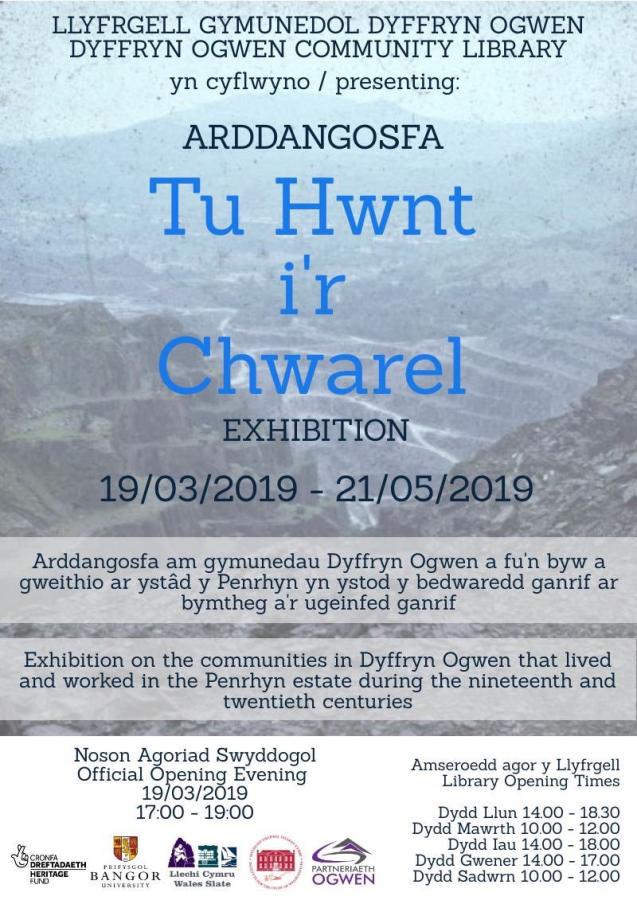
In 2018, we were delighted to receive a small grant from the Heritage Lottery Fund to work with the communities of Dyffryn Ogwen to explore the lives and experiences of those generations of people who lived and worked on the Penrhyn estate during the course of the 19th and 20th centuries.
The lives and experiences of those thousands of individuals who lived on the estate as tenants and who worked on estate farms, or as woodmen, gamekeepers or in the Castle as domestic servants remain largely untold. The project aimed to redress this balance by drawing upon the memories and memorabilia of people living in the area, and through research of historical records kept at Bangor University Archives and Gwynedd Archives.
The community heritage project ran across 2018, under the guidance of Dr. Marian Gwyn, with memory and memorabilia sessions in Neuadd Ogwen, Bethesda, a local Welsh-language history day at Hendre Hall, Talybont, guided heritage tours of Moel Faban and Llandygai, workshops and training sessions in the archives at Bangor and Caernarfon, and an end of project conference at Penrhyn Castle. Dozens of people contributed photographs, records and memories during the course of the events and activities, which underpinned the creation of a bilingual pop-up exhibition and booklet reflecting on the themes of farming, landscape, gamekeeping and poaching, estate housing, service at Penrhyn Castle and the sale of the estate.
The exhibition was displayed in the Vice-Chancellor’s Corridor at Bangor University and later at Bethesda Library, in collaboration with Partneriaeth Dyffryn Ogwen.
UNESCO World Heritage Status – Gwynedd Slate
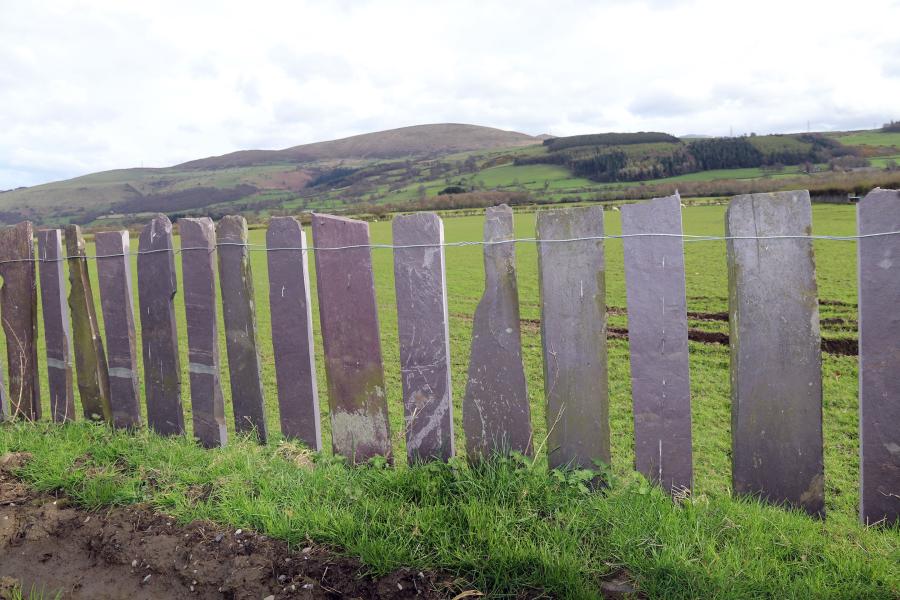
ISWE was a proud supporter of the regional efforts, led by Gwynedd Council, to obtain UNESCO World Heritage Status for the Slate Landscapes of North West Wales. This designation was confirmed in 2021 and provides a major boost to the heritage, culture and economy of the region.
The slate landscape is inextricably associated with the history of the Penrhyn estate – reflecting the evolution of an upland agricultural society to one dominated by the slate industry; with towns, quarries and transport links carving their way through the mountains of Eryri down to the ports which connected the Gwynedd quarrying industry to other parts of the world.
Bangor University is committed to supporting the long-term legacies of the Llechi Cymru | Wales Slate designation, including through the spheres of academic research and community heritage.
Podlediad Penrhyn
Dr. Kayla Jones undertook her PhD with ISWE between 2018-23, exploring how digital media – and podcasting in particular – can be used to communicate the multilayered complexities of heritage sites such as Penrhyn Castle.
As part of her project, Kayla produced a new digital resource – Podlediad Penrhyn – which provides interpretations of Penrhyn’s influence both locally and globally, utilising different voices from across academia and the local area to convey the varied narratives and perspectives of the Penrhyn estate whilst establishing a best practice model for practitioners or the heritage industry.
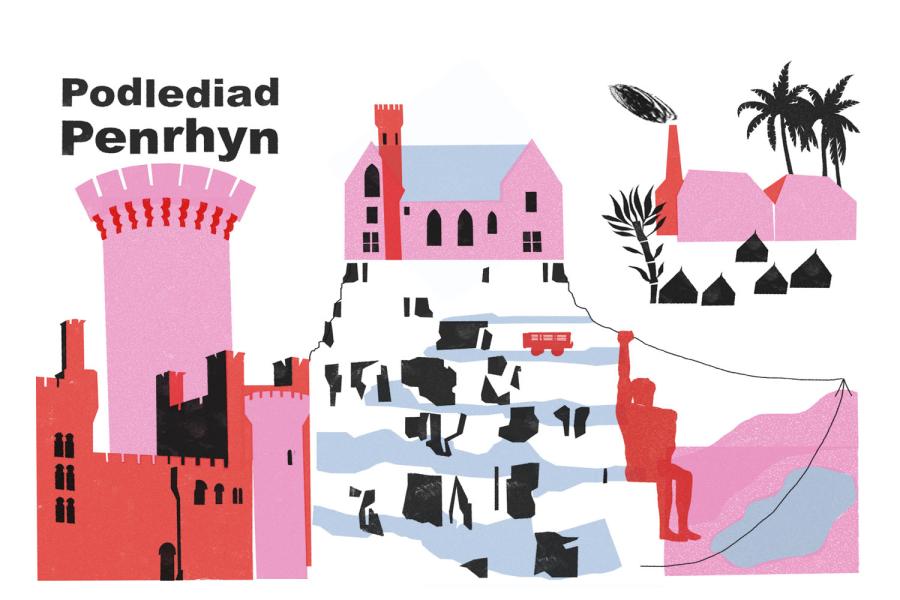
The podcast proceeds through five episodes:
- Early History
- Slavery & Jamaica
- Life at Penrhyn Castle
- Slate
- Penrhyn’s Impact Today
Find out more about Kayla’s research and download her podcast.
Being Human Festival 2021: Penrhyn in Poetry
In 2021, two of our doctoral researchers, Matthew Rowland and Kayla Jones partnered with Eleanor Harding of the National Trust to host a programme of public events at Penrhyn Castle in association with the annual Being Human Festival – supported by the AHRC and British Academy.
The project sought to combine and juxtapose Penrhyn’s medieval and early modern status as a site and focus for Welsh language praise poetry (canu mawl) with contemporary local sentiments towards the site and its history which range from disengagement to outright hostility. The event offered workshops on poetry writing and asked participants to use this medium to share their perspectives (praise, condemnation and much in between) on Penrhyn Castle. The creative activities generated a range of insights, feeding into the National Trust’s efforts to reinterpret and reposition the site, with greater recognition of the site’s significance beyond the walls of the Castle.
The project was underpinned by Kayla and Matt’s research interests, including public perceptions of country houses in Wales and the historical significance of the Penrhyn estate.
Plantation, Quarry, Farm (and everything in between)
‘Money from slavery filtered into the hands of owners, investors and workers across Wales. The whole economy was supported by African industry and trade during the era of the British Empire.’ This is a conclusion of the Welsh Government’s 2020 Audit of Commemorations in Wales of the Slave Trade and the British Empire. The historic Penrhyn estate in Gwynedd provides an embodiment of those words. The estate once covered a vast area in north Wales, incorporating hundreds of farms, rural settlements, major industrial ventures centred on the extraction and export of slate (underpinning the recent award of UNESCO World Heritage Status), Penrhyn Castle (now operated by the National Trust) and exerted a significant influence on the development of Bangor. The capacity to amass, manage, improve and exploit this land, until the early-twentieth century, was funded by a wealth accumulated from the enslavement of people on sugar plantations in Jamaica.
In 2023, our PhD researcher, Alex Ioannou, organised a 2-day workshop at Bangor with academics, archivists and heritage professionals, to engage in a package of knowledge exchange activities centred on the history of the Penrhyn estate and its archives. The network was formed to establish an intellectual framework for understanding and interpreting the Penrhyn archive and identify records within the Penrhyn archive as priorities for digitisation and public dissemination.
The Penrhyn estate archive is formally held for the nation by Bangor University Archives and Special Collections and is the vital evidence base for understanding the history and influence of the Penrhyn estate across local, national and global spheres – providing vital insights into the connections between ‘plantation, farm, quarry (and everything in between)’ that we want to explore in this project. However, the Penrhyn estate archive is enormous, and despite being fully catalogued, very few of its records have been digitised and made accessible online. The core research questions of this project are established to make this vast repository of knowledge more accessible, discoverable and useable:
- What can the Penrhyn estate archive reveal about of the links and connections between Caribbean slavery and north Wales?
- How can this archive be used to inform the construction of clearer public narratives on the connections between slavery, colonialism and the landscape, society, economy and culture of Wales?
- Which records from the archive should be prioritised for digitisation and heritage interpretation objectives?
ISWE is committed to developing this research as a long-term priority. The workshop was kindly supported by a Seed Funding Grant from the College of Arts, Humanities and Business.
